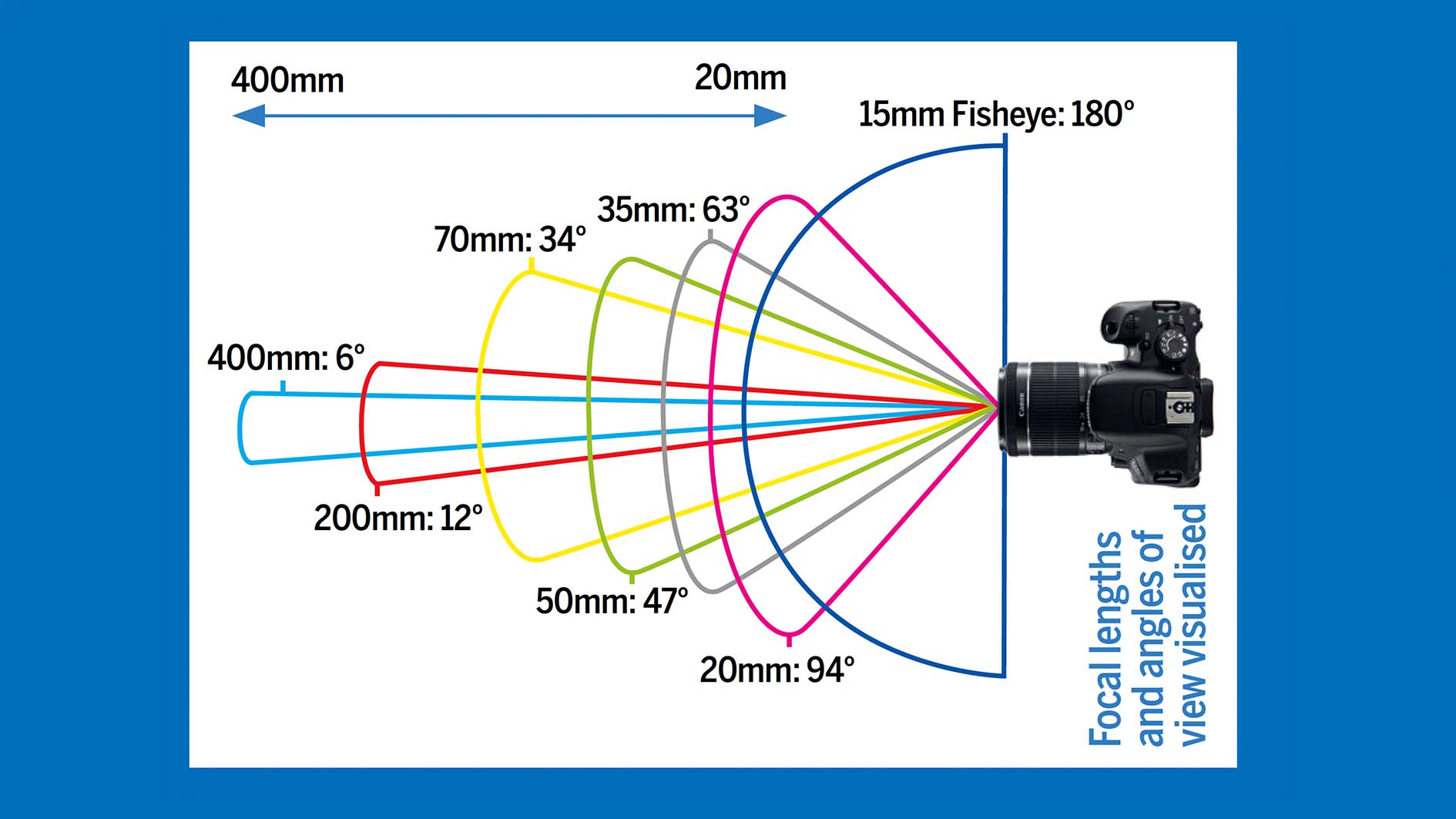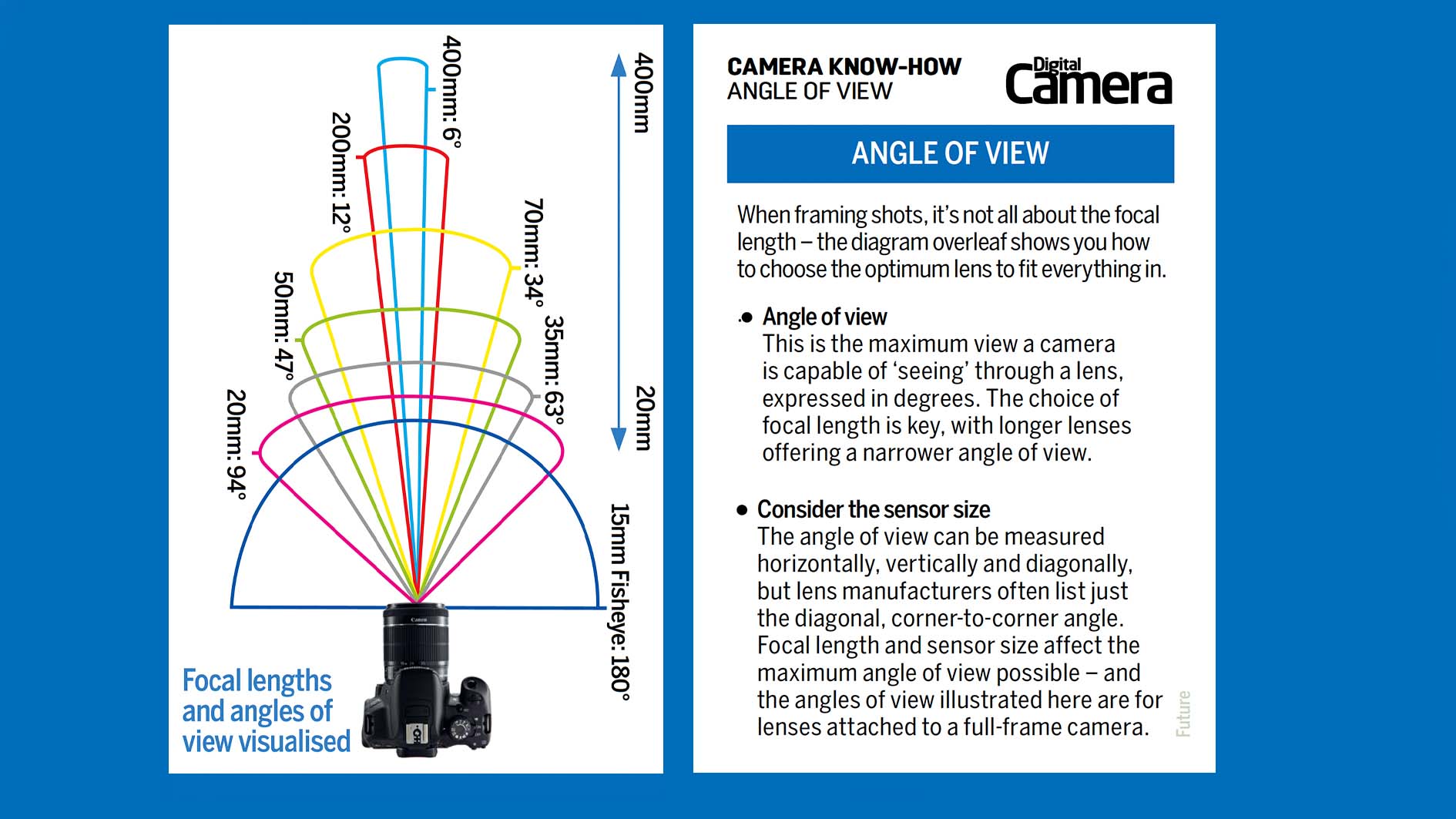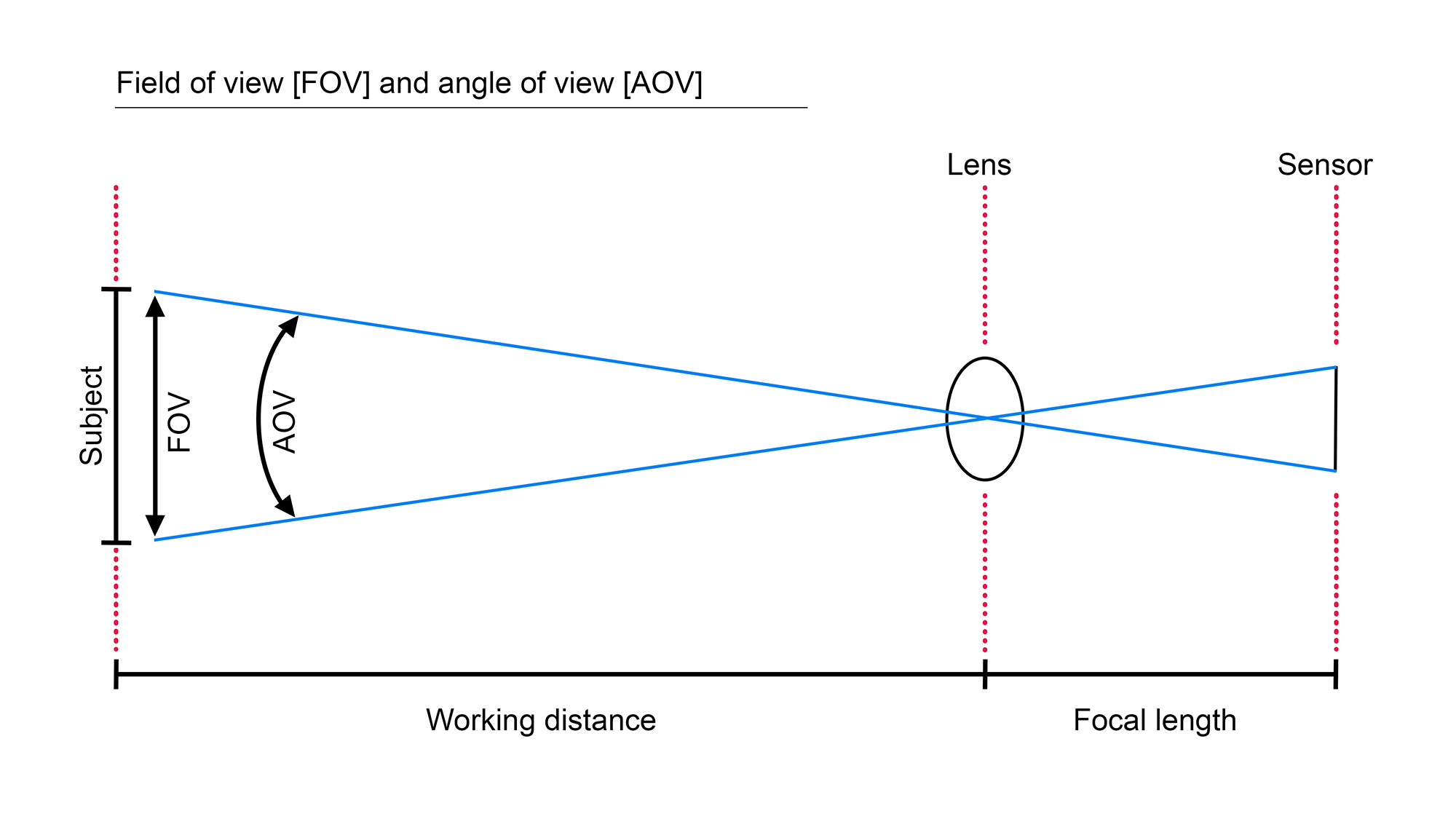
Field of view (FoV) is an important concept to understand whether you're a photographer or a filmmaker. When it comes to shooting, there's not only a question of what we're seeing in our image but how much of the scene we're seeing. That's where field of view comes in. However, field of view is closely related to – and very often confused with – angle of view (AoV), so I'm going to bust that myth right here, outline the differences and explain how you can calculate both.
Here's what you need to know about field of view and angle of view...
What is field of view?
Field of view is simply the observable area that you can see either through your eyes or an optical device, such as a camera lens or telescope. The official definition according to Wikipedia is "the extent of the observable world that is seen at any given moment".
Don't confuse field of view with depth of field, which has to do with how much of your observable scene is actually in focus. When we talk about view, it could be seen through your eyes, through the camera's viewfinder, or on a viewing screen. The term refers to the whole coverage of a scene, rather than one fixed focal point.

What is the angle of view in photography?
The angle of view is the maximum view a camera is capable of 'seeing' through a lens, expressed in degrees. The choice of focal length is key, with longer lenses offering a narrower angle of view. Digital Camera World has put together another guide to help you understand the relationship between focal length and angle of view.
You need to consider sensor size, too. The angle of view can be measured horizontally, vertically and diagonally, but lens manufacturers often list just the diagonal, corner-to-corner angle. Focal length and sensor size affect the maximum angle of view possible – and the angles of view illustrated here are for lenses attached to a full-frame camera.
Field of view vs angle of view
This is a tricky one to get your head around, because the two terms are often used interchangeably. But they are separate concepts and are calculated differently, however, they both convey how focal length and sensor size affect the framing of a scene, allowing you to draw similar conclusions. The key difference is that field of view illustrates the area a particular lens and sensor combination will cover in relation to the subject being photographed. Whereas angle of view is used to illustrate a lens and sensor combination's angular coverage, independently of what's being photographed.
Angle of view is favored by lens and camera manufacturers over field of view, because it doesn't change in relation to the working distance (the distance from the subject to the front element of the lens). And while angle of view can be measured horizontally, vertically or diagonally, manufacturers tend to stick to the latter. To calculate field of view, it helps to know the lens and camera combination's angle of view.
Like angle of view, field of view can be measured horizontally, vertically or diagonally. But in most cases, it's measured horizontally to illustrate the field of view of a landscape-orientation image or vertically to illustrate the field of view of a portrait-orientation image. It's important to note that if you want to work out the horizontal or vertical field of view, you'll need to add the horizontal or vertical angle of view respectively, when following the equation (below).
How to calculate angle of view and field of view

To calculate the angle of view, set your calculator to use degrees before applying the following equation. If you cannot set your calculator to use degrees, you'll have to convert the radian value you're left with into degrees.
Angle of view = 2 x arctan (sensor diagonal, width or height / 2 x effective focal length)
Calculating the field of view is a little more complicated because a number of variables can alter the equation. Thankfully, you can get around this (and the angle of view equation) easily by using an online field-of-view calculator, like this one from Omni Calculator.
Field of view = 2 x tan (angle of view / 2) x working distance from subject
What I like about the Omni Calculator is that – providing you enter your sensor's width, height and diagonal – it'll provide horizontal, vertical and diagonal AoV and FoV measurements.
Why do I need to know about FoV and AoV?
When we talk about field of view or angle of view, most of the time precise calculations aren't required. They're often used to help you choose the right focal length of lens to use for your photography. And it's this very reason why they're used interchangeably, given that they both allow the photographer to draw – more or less – the same conclusions.
For example, if I were to say: "I'd suggest using an ultra-wide field of view to frame this landscape," you'd know I'm talking about an ultra-wide angle focal length (35mm equivalent). But if I said, "I'm going to use a 16mm focal length to frame this landscape," you'd have no idea whether I was using a full-frame camera, an APS-C camera providing an equivalent 24mm focal length or if I'd already considered my APS-C camera's crop factor and was in fact using an 8mm lens… Discussing field/angle of view ensures everyone is on the same page, regardless of sensor size.
Calculating field of view becomes more important if you require extreme precision due to working at high magnifications. Deep space and photomicrography are two genres where calculating the best telescopes or the best microscopes field of view is advantageous, allowing you to work out, say, exactly what celestial objects you can fit into your frame.
Field of View and angle of view takeaways
- FoV and AoV are different but often used interchangeably.
- FoV illustrates the parameters of a lens/sensor combination in relation to a subject.
- AoV illustrates the angular parameter of a lens/sensor combination.
- FoV and AoV can be calculated using equations (above) or by using an online calculator.
- It's often not necessary to precisely calculate FoV or AoV.
- Lens and camera manufacturers favor using the diagonal AoV when delivering specs.
- The human eye has an average field of view of about 170-180 degrees.
- In photography, you can change the field of view by changing the lens and/or sensor size.
- The wider the lens (the smaller the focal length), the wider the field of view. The tighter the lens (the higher the focal length), the tighter the field of view.
Use the handy cheat sheet above to see this all for yourself. And make sure to keep us bookmarked for more great photography cheat sheets.
You might also like to read: the exposure triangle explained, how to understand f-stops and our general Photography tips and tricks.







